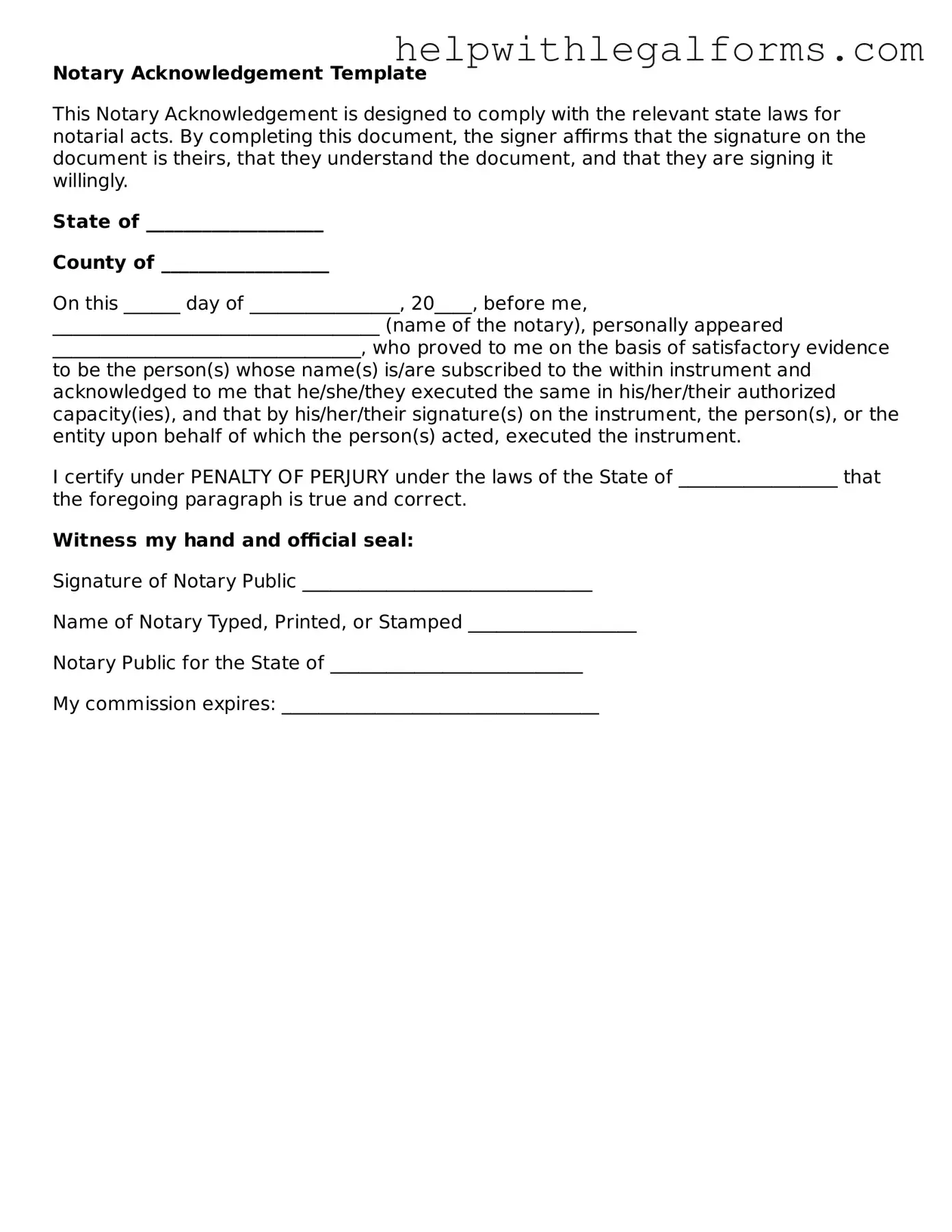What is a Notary Acknowledgment form?
A Notary Acknowledgment form is a document used by a notary public to officially certify that a signer's signature on a document is genuine and that the signer executed the document willingly and under their own power. It serves as a fraud-deterrent measure in various legal, financial, and real estate transactions, ensuring that the person signing the document is properly identified and acknowledges signing the document purposefully.
When is a Notary Acknowledgment needed?
Notary Acknowledgments are needed in a variety of circumstances, particularly when the legal document in question requires a higher level of verification and fraud prevention. Common documents that might require a notarized acknowledgment include real estate deeds, power of attorney forms, certain financial agreements, and legal contracts. Essentially, it is required whenever a party needs to prove to another party, or a legal body, that the signature on a document was made willingly and by the appropriate individual.
What information is included in a Notary Acknowledgment form?
The Notary Acknowledgment form typically includes the date of the acknowledgment, the name of the person whose signature is being acknowledged, the notary's statement certifying that the signature on the document was willingly made, the location where the acknowledgment took place, and the notary's signature and seal. The form might also contain details specific to the notary's commission, such as their commission number and expiration date, and sometimes the signer's expressed willingness to sign the document in question.
Can a Notary Acknowledgment be completed for a document signed in the past?
Yes, a Notary Acknowledgment can be completed for a document signed in the past, as long as the signer of the document is present to affirm to the notary that the signature in question is indeed theirs and was signed willingly. The notary will visually inspect the document, verify the signer's identification, and then complete the acknowledgment form, even if the document itself was signed at an earlier date. It’s important to remember that the notary's role is to witness the acknowledgment of the signature, not the actual signing process.
How does one get a document notarized with a Notary Acknowledgment?
To get a document notarized with a Notary Acknowledgment, first, ensure that the document is fully completed, as a notary cannot notarize incomplete documents. Next, find a notary public—these are often available at banks, law offices, government buildings, or through mobile notary services. Bring a valid form of identification, such as a driver's license or passport, and optionally, witnesses if required by the notary or your document. The notary will then verify your identity, witness your signing of the acknowledgment (or acknowledge your previously made signature), and apply their notary seal or stamp to certify the notarization.
